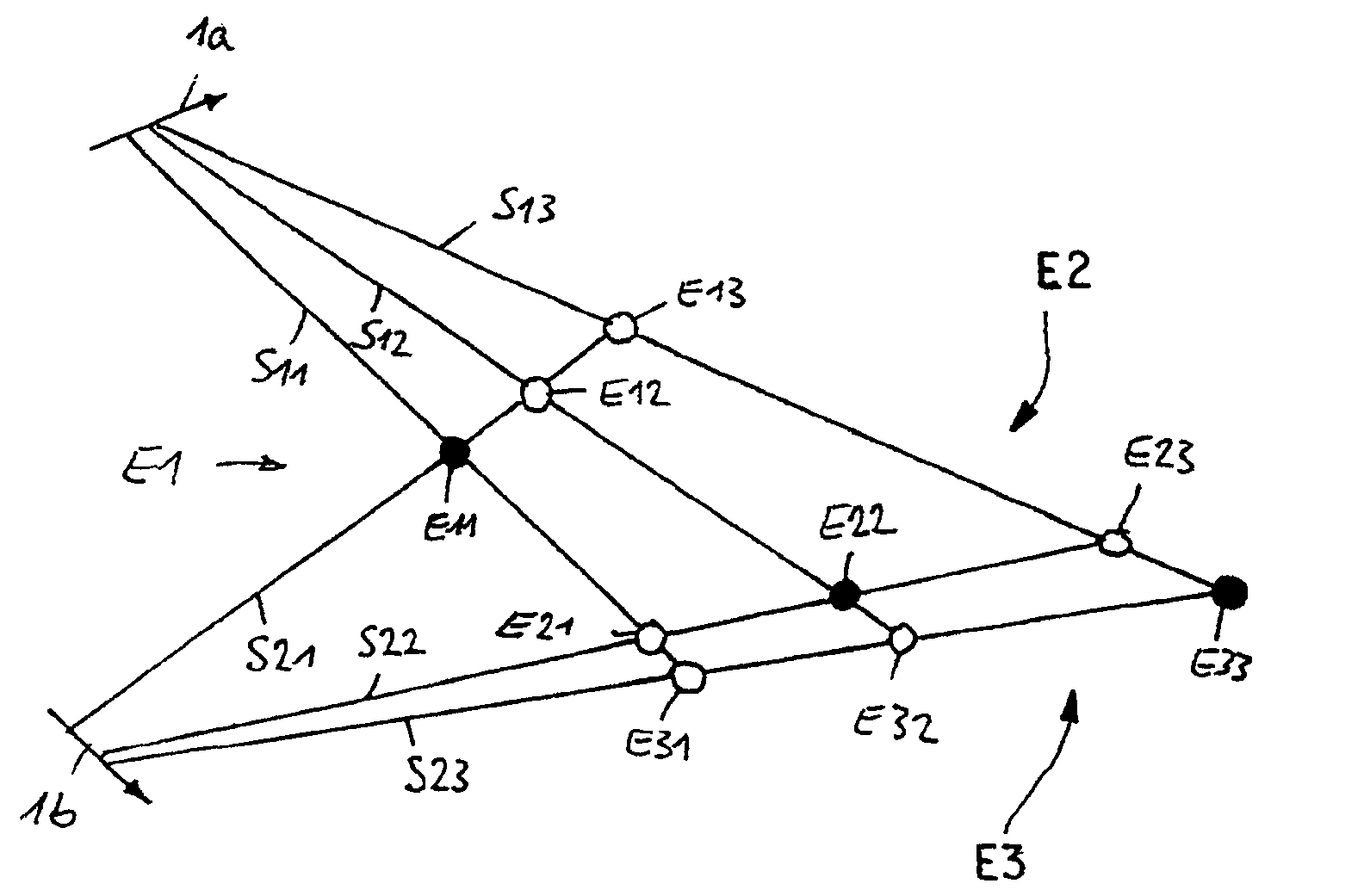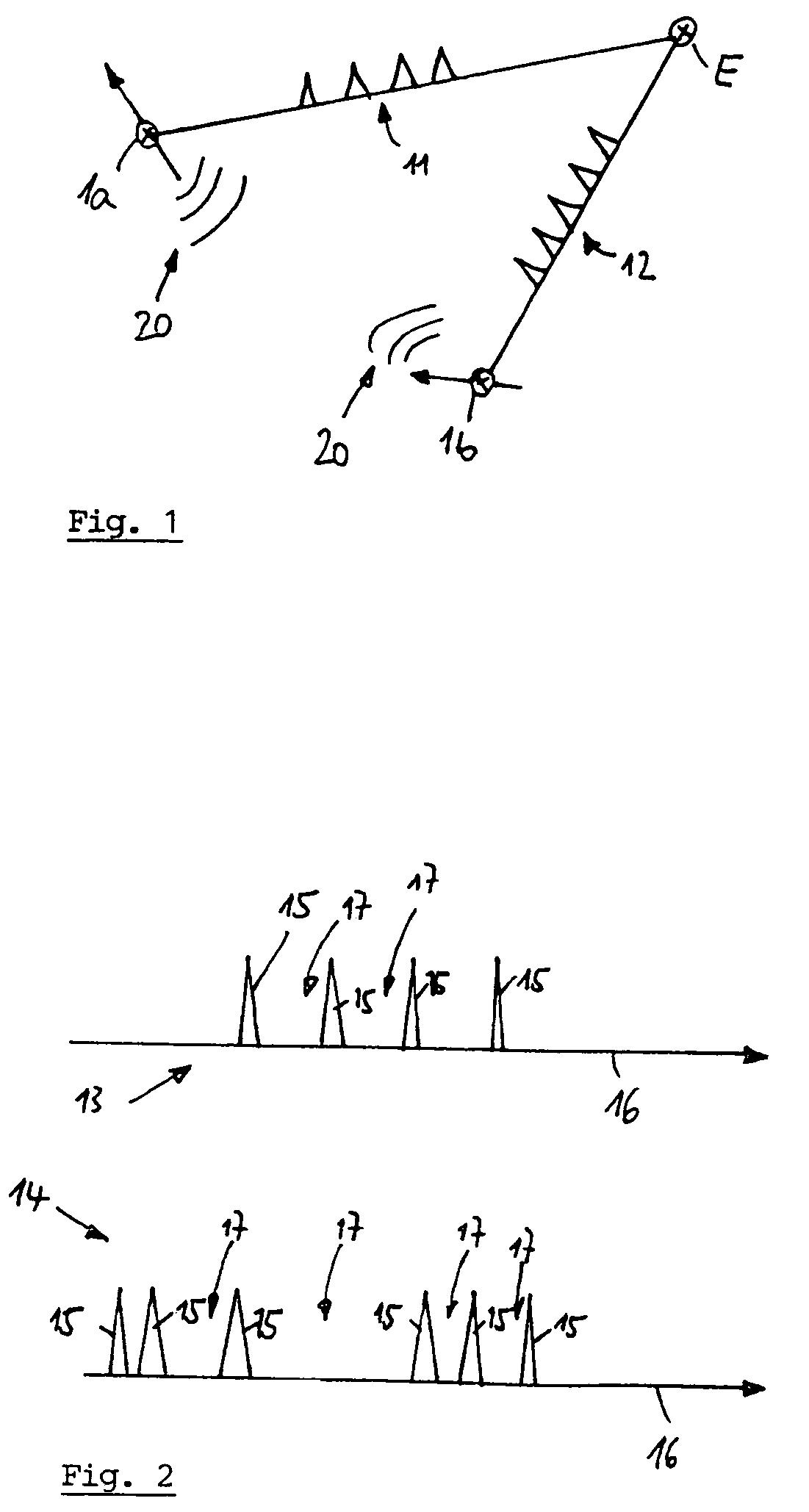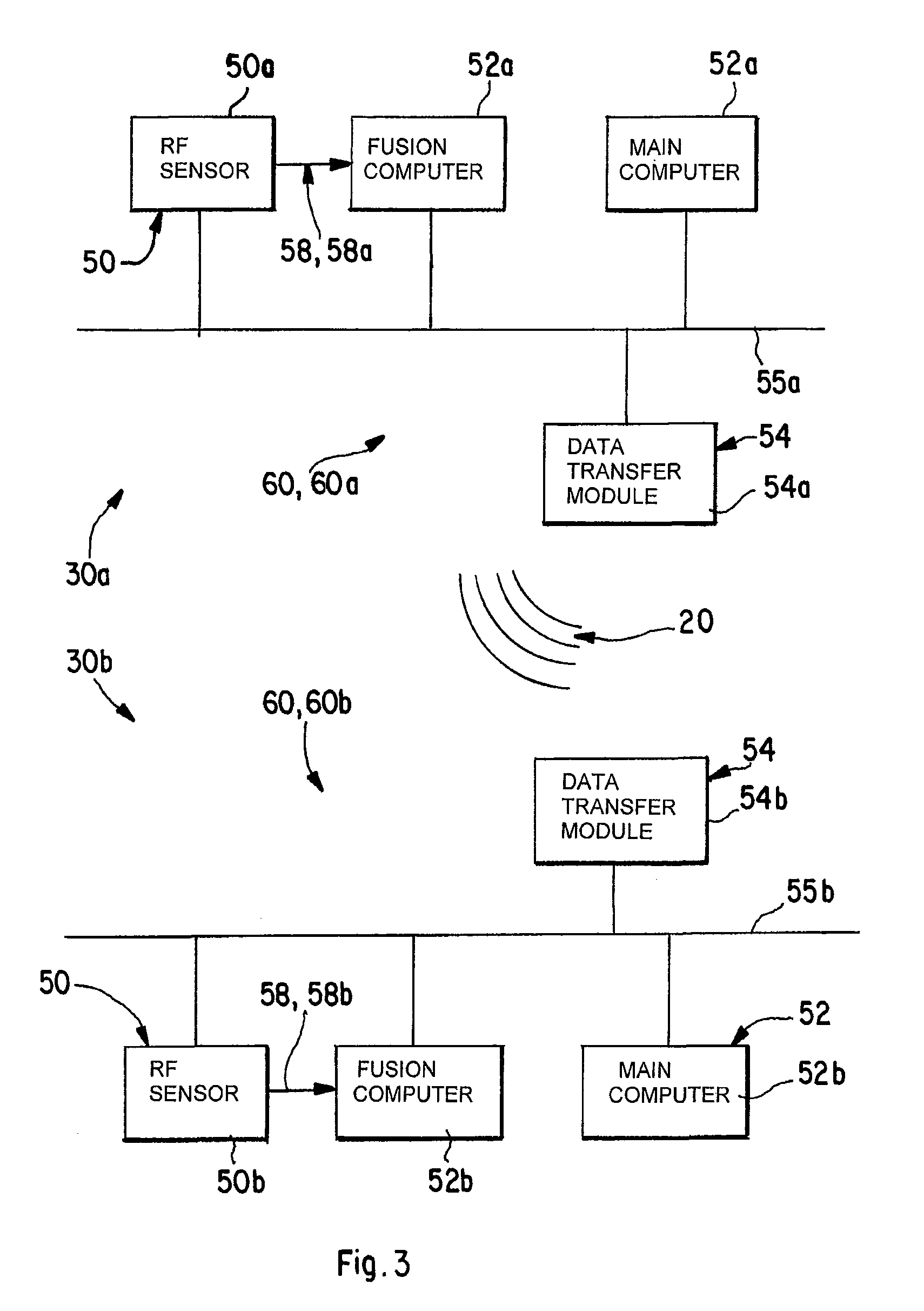Method and system for emitter localisation
a technology of emitter localisation and method, applied in direction finders using radio waves, radio wave reradiation/reflection, radio wave reradiation, etc., can solve the problems of insufficient method accuracy, significant increase in computer/processor performance requirements, and insufficient accuracy of methods. , to achieve the effect of limited inter-aircraft transmission rate, limited computation costs, and high accuracy
- Summary
- Abstract
- Description
- Claims
- Application Information
AI Technical Summary
Benefits of technology
Problems solved by technology
Method used
Image
Examples
Embodiment Construction
[0025]Employment of the invention is envisaged in a configuration of at least two flying platforms implementing the system or process in accordance with the invention, whereby the flying platforms can be manned or unmanned flying vehicles. Such a constellation is illustrated in FIG. 1 by means of a first flying platform or a first flying device or airplane 1a, and by means of a second flying platform or a second flying device or airplane 1b. Flying platforms 1a, 1b (and optionally additional flying platforms 1c: see FIG. 7) are components of a military operational formation and have the task of detecting and locating enemy emitters, in the radar frequency range, on the basis of cross bearing via passive RF sensors that are integrated into the platforms or flying vehicles. By way of example, such an enemy emitter E is illustrated in FIG. 1.
[0026]Emitter E sends out pulse sequences in the radar frequency range, whereby two pulse sequences 11, 12 are symbolically illustrated in FIG. 1....
PUM
 Login to View More
Login to View More Abstract
Description
Claims
Application Information
 Login to View More
Login to View More - R&D
- Intellectual Property
- Life Sciences
- Materials
- Tech Scout
- Unparalleled Data Quality
- Higher Quality Content
- 60% Fewer Hallucinations
Browse by: Latest US Patents, China's latest patents, Technical Efficacy Thesaurus, Application Domain, Technology Topic, Popular Technical Reports.
© 2025 PatSnap. All rights reserved.Legal|Privacy policy|Modern Slavery Act Transparency Statement|Sitemap|About US| Contact US: help@patsnap.com



